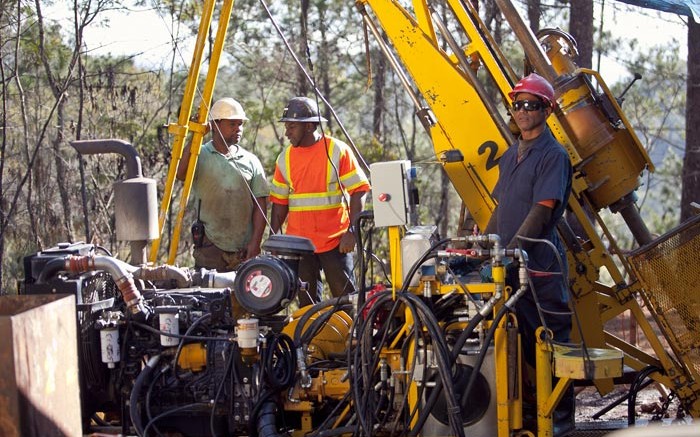Unigold (TSX: UGD) has reported intercepts of 10.18 grams gold per tonne over 19 metres and 12.94 grams gold over 11 metres at its Candelones Extension deposit, 200 km northwest of the Dominican Republic’s capital city of Santo Domingo.
The high-grade drill results came from step-out holes targeting the western end of the proposed pit, where the company wants to follow mineralization to depth and along strike.
Drill hole 20-148 intersected 10.18 grams gold per tonne, 4.5 grams silver per tonne, 0.19% copper and 1.53% zinc over 19 metres within a broader interval of 75 metres averaging 3.41 grams gold, 3.7 grams silver, 0.07% copper and 0.56% zinc. The mineralization started from about 60 metres below surface.
A second and deeper hole, 20-150, returned mineralization starting from a depth of 125 metres, and cut 11 metres averaging 12.94 grams gold, 15.6 grams silver, 0.27% copper and 3.03% zinc, within a broader interval of 145 metres averaging 1.97 grams gold, 6.2 grams silver, 0.07% copper and 0.58% zinc. The bottom of the hole ended in pyrite-dominant massive sulphide mineralization grading 2.25 grams gold over 4 metres.
The company noted that drill hole 20-150 was the first time that massive sulphides had been observed at the west end of the proposed pit, and pointed out that the textures and alteration were similar to the massive sulphides it had delineated 800 metres to the east.
“These latest holes have extended the high-grade, near-surface mineralization at the west end of the deposit over 100 metres deeper,” Joe Hamilton, the company’s chairman and CEO, stated in a March 23 news release. “The deposit at Candelones shows multiple styles of mineralization that are likely amenable to both bulk and selective mining methods.”
Hamilton pointed out that finding massive sulphides at the west end of the proposed pit in an area, where none had been observed previously, continued to reinforce the area.
He also noted that there are another four separate targets on the trend that are drill-ready, “some of which have larger surface expressions than the known Candelones mineralization.”
Candelones is part of Unigold’s 226-sq.-km Nieta concession, 100 km from the country’s second-largest city, Santiago de Los Caballeros.
Nieta lies within the Greater Antilles volcanic arc that extends from the island of Hispaniola through Cuba. The property’s western limit is the Haiti border.
The property was a government fiscal reserve and granted to Unigold in 2002.
News of the high-grade drill results on March 23 sent the junior’s shares up 9.5% to 11.5¢ apiece.
At press time, Unigold was trading at 12.5¢ per share within a 52-week range of 9¢ and 28¢.
The company has 78 million common shares outstanding for a $9.8 million market capitalization.


Be the first to comment on "Unigold reports high-grade assays from Candelones in Dominican Republic"